Content
- 0.1 Westmalle Tripel, 9.5%
- 0.2 De Ranke XX Bitter, 6.2%
- 0.3 Duvel Tripel Hop Citra, 9.5%
- 0.4 De Struise Brouwers Rio Reserva, 11%
- 0.5 Rodenbach Grand Cru, 6%
- 0.6 Fantôme Saison, 8%
- 0.7 Boon Oude Geuze, 7%
- 0.8 St Bernardus Wit, 5.5%
- 0.9 De Cam, Framboise Lambiek, 6%
- 0.10 St Feuillien Brune, 8.5%
- 1 Trappiste
- 2 Abbey (or monastery) beer (Abbey)
- 3 Lambic
- 4 Belgian white beer (wheat)
- 5 Golden Ale
- 6 Red Ale
- 7 Seasonal beer (Saison)
- 8 Brown Ale
- 9 Belgian stout (Stout)
- 10 How many beers are there in Belgium
- 11 Floris Kriek (Belgian cherry beer)
- 12 Trappiste (Trappist beer)
- 13 Lambic
- 14 Abbey (abbey beer)
- 15 Golden Ale (golden or pale ale)
- 16 Belgian white beer
- 17 Red Ale
- 18 Brown Ale
- 19 Saison (seasonal beer)
- 20 Stout
Not so long ago, Belgian brewing was included in the UNESCO Intangible Heritage List: Belgium has always adopted the best brewing traditions of other countries, giving them a Belgian flavor. Today, new wave brewers are following the same path, combining hops from all over the world with true Belgian mastery of balance. Some experts fear that traditional Belgian brewing will not withstand the onslaught of the craft wave, while others are confident that everything is only for the best.
Meanwhile, Britain's The Independent has compiled a list of beers that will help you get to know modern Belgian brewing. The list deliberately did not include varieties that are almost impossible to get.
Paul Walsh, editor-in-chief of Belgian Beer & Food magazine, helped compile the list.
- A common feature of Belgian brewing is the pursuit of balance and quality. Faceless, uninspiring Belgian beers come across from time to time, but it is extremely rare to find unbalanced or defective beers. It is difficult to get rid of the burden of tradition, even for the youngest Belgian breweries, says the expert.
Westmalle Tripel, 9.5%
If you pick one beer that can represent Belgian brewing in its entirety, it's likely the Westmalle Tripel, a strong Trappist blonde ale. It has an unmistakable aroma of spicy Belgian yeast and a dense white head. Spicy notes are palpable in the palate, along with soft fruity notes and a sweet malt that forms the base of this strong beer. An excellent example of Trappist brewing.
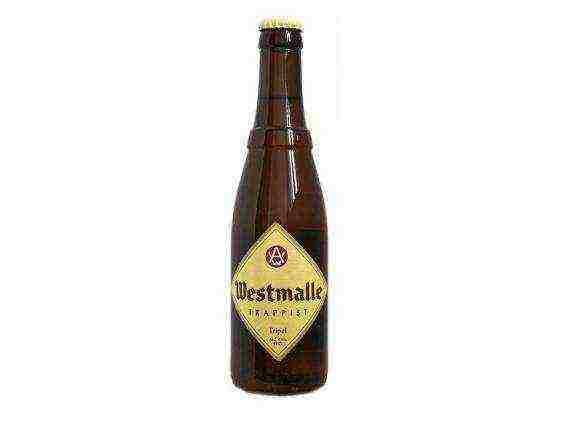
De Ranke XX Bitter, 6.2%
A golden Belgian beer in which the maltiness is slightly muted and the hopping is increased. The brewery itself says it's a low-alcohol beer (6.2%), but Belgium is a country of strong beer. It is a light, effervescent beer with a moderate yeast character, dry enough to be drinkable. Hops - with a peppery and piney character - show their bitterness, but not to the same degree as many modern IPAs. This is a perfectly brewed Belgian ale with a shiny hop accent.
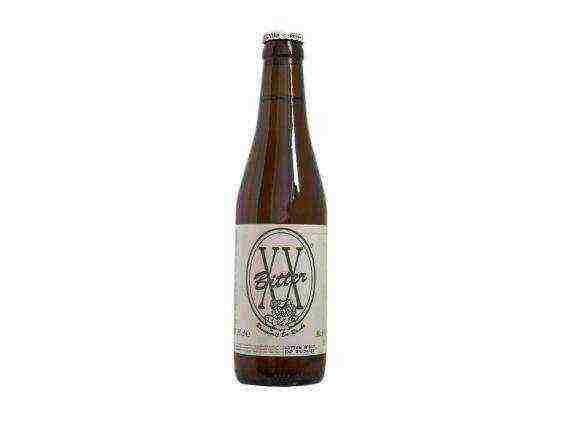
Duvel Tripel Hop Citra, 9.5%
Chilled Duvel - golden, sparkling, with a clean and invigorating taste - has topped the personal charts of many beer lovers for decades, but has recently begun to play with the classic ale. Since 2007, a third hop has been added to the familiar Saaz b Styrian Golding blend. In 2016, Citra was chosen as the "hero" of the Tripel Hop series based on the voting of beer lovers. This 9.5-degree beer is slightly stronger than the classic Duvel, and the hops add pleasant notes of grapefruit and lemon to the yeast, peppery, slightly sweet and bitter flavors of the base beer. A brilliant modernization of a timeless classic.
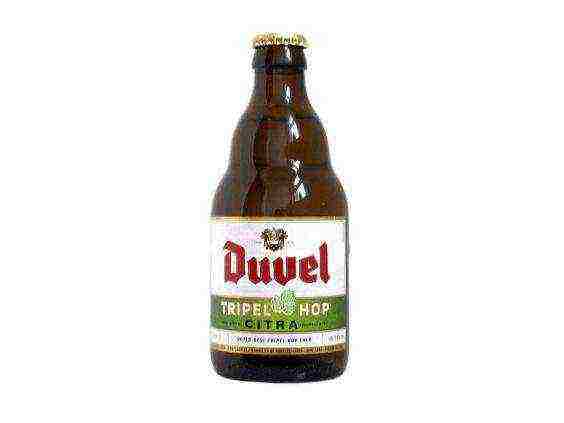
De Struise Brouwers Rio Reserva, 11%
De Struise is one of the most influential Belgian breweries today. They re-use old technologies like barrel aging and blending and create experimental strains. This issue of the Rio Reserva series was aged for four years, first - in tanks, then it was poured into barrels of wine from Saint-Emilion, and finally sent to "fine-tuning" in barrels of bourbon. It is an amber beer with a mild malt character, rich caramel flavor, wine notes and a warm spicy oak nibble. From the very beginning, the presence of whiskey is palpable.
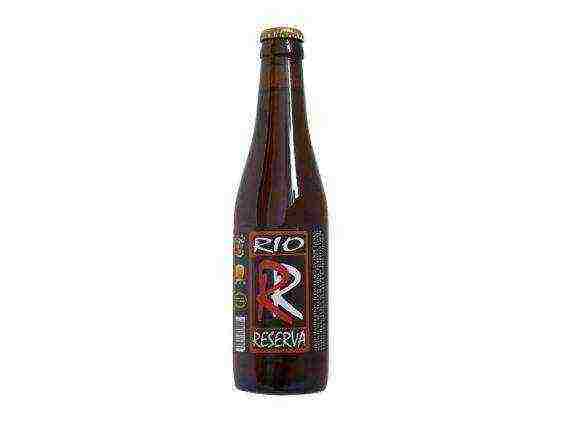
Rodenbach Grand Cru, 6%
This Flemish red ale is a complex creation: a mixture of two-thirds of a beer aged for two years in oak foeders and a third of a young beer. Fermentation takes place with the participation of different strains of yeast and bacteria, which adds fruity acidity to the notes of oak and caramel malt. The most obvious characteristics are cherries and plums, and they are at such a level that some are surprised to learn that there are no real fruits here. Slice the softest cheese and enjoy this beer like a fine wine.

Fantôme Saison, 8%
Traditional French and Belgian saisons are brewed all over the world today, and the style takes many different forms. But there is a place on this list for the classic Belgian variety. The Dupont saison is often cited as one of the best, although experimental breweries such as Brasserie de Blaugies and Fantôme also produce excellent examples of this style. The “standard” Fantôme saison has a barnyard character and a light lemongrass scent. There are many notes in this beer - odorous yeast, acidity, floral and herbal hops, lemon spice. After enjoying the Fantôme saison, try their own Vertignasse - an equally complex vitbier with an unusual green hue.
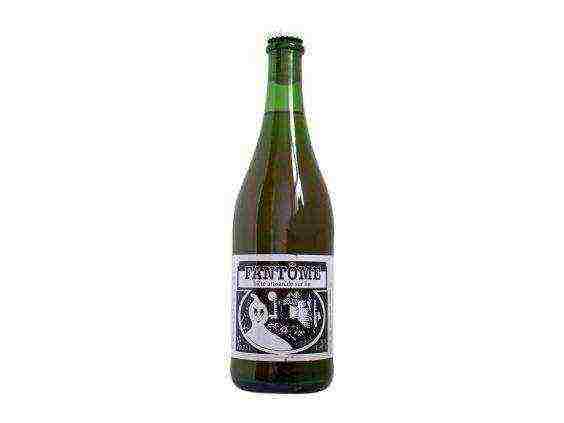
Boon Oude Geuze, 7%
Of course, the gueuze (a mixture of old and new lambic) Cantillon and 3 Fonteinen are worth trying if you can find them. Fortunately, the more widely available Boon varieties are also a great example of style. In terms of dryness and sparkling, gueuze resembles champagne (the addition of young lambic causes fermentation in the bottle) with notes of grape must, acidity and notes of oak. A great choice for anyone looking to explore the world of sour beer - the aromatic cheese flavors are quite understated. But this beer will find a place on the table of a connoisseur of sour foods.
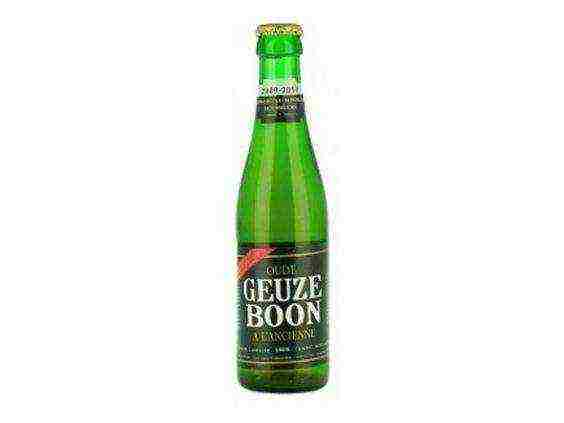
St Bernardus Wit, 5.5%
Belgian witbier is brewed with wheat and spices such as coriander and orange peel. This variety is just great. He has a divine appearance - golden beer with a fluffy cloud of white foam; a stunningly invigorating aroma with citrus-spicy, fruity and yeast notes. Soft foamy carbonation is enlivened by coriander, lemon and orange notes. Vitbir perfectly removes thirst. Great beer to switch from strong Belgian ales.

De Cam, Framboise Lambiek, 6%
Although it costs a small fortune, this fruity lambic is a great example of a traditional Belgian product from a modern brewery. It is a sour ale with yeast for its aromatic character and raspberry for its fruity character. The barrel aging has given a woody depth and increased the intense acidity to acetic, but it is drunk with pleasure - a mild and light beer with a bright sour taste.
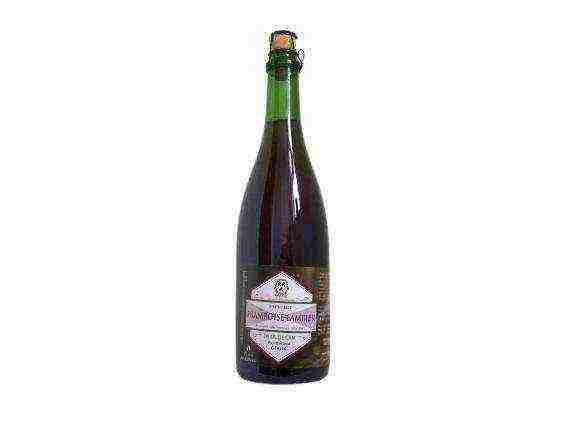
St Feuillien Brune, 8.5%
St Feuillien is a Walloon brewery founded in 1873, and their triple beats Westmalle for its price. But for this selection, an abbey-style brown ale is chosen. This rich malt beer, caramel notes lead to the finish with grainy and dried fruit notes. The beer is generously hopped and has a long dry and bitter finish.
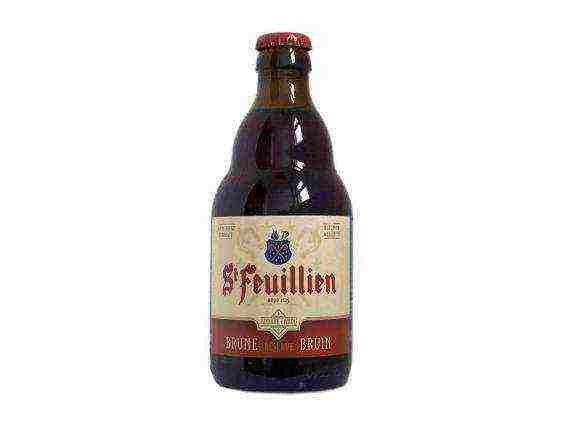
Want to go to beer paradise? Then you are in Belgium! There is truly a cult of this foamy drink here. Beer is to the Belgians what wine is to France. Belgium produces over 600 brands of beer in a wide variety of styles. Each variety is unique in its own way and has a unique taste.
This article from beer tourism enthusiasts will help you not to get lost in such an abundance of Belgian beers and understand what it is, in which you will learn about the most popular Belgian beers.
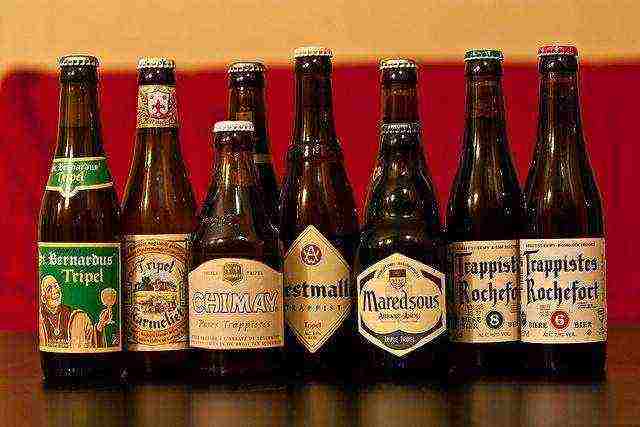
Belgian beers. Photo:
Compared to Belgium, Germany undoubtedly has more breweries, the Czechs drink more liters per person annually, but the centuries-old love of the Belgian people for the art of brewing is deep and multifaceted, like ingrained customs in the countryside, national cuisine and culture, which for an outsider may seem rather strange and surprising.
It is not easy to explain why Belgium has such a diverse and celebratory beer culture. Perhaps the reason was the dirty water in the Middle Ages and instead of it they often drank church-made beer. Independent abbeys promoted artisanal techniques, locality and product purity that are now fashionable concepts in the food world.
Small Belgium is largely a country of regions (the division into regions took place in 1830) and each of them prides itself on its own personality, which, of course, includes a particular style and taste of beer. Burgundy, Flemish, Dutch, French and more. It's a lifelong job to thoroughly explore the variety of local beers, but let's take a look at the most popular varieties.
Trappiste beer
Six of the eight Trappist breweries are located in Belgium. The Trappist Brewery - Westmalle - launched its first frothy beverage in 1836. Trappiste is a commitment to quality, tradition and purity. The relatively small production of Trappist beer in the monasteries lends exclusivity to their products.
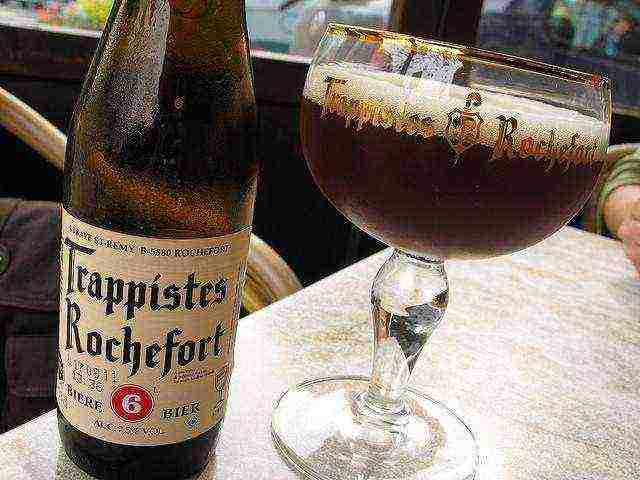
Belgian beer - Trappiste Rochefort. Photo:
Surprisingly, six brewing abbeys are scattered across the country and each one reflects its specific locality. Achel is located in a flat, green area close to the Dutch border, Chimay is located among forests near the French border, Orval is far to the south, Rochefort is near the forests and hills of the Ardennes, Westmalle is in the east next to the once powerful trading power of Antwerp and Westvleteren is towards the North Sea.
Abbey (or monastery) beer (Abbey)
For the education of a culture of brewing, Belgium owes its monks, many of whom arrived there as refugees during the French Revolution, when anti-church uprisings broke out. Abbey beer can be used as a brand, as a link to this historic event, although the production of certified Abbey beer is inextricably linked with the monasteries. Even some varieties of the drink are named after famous abbeys.
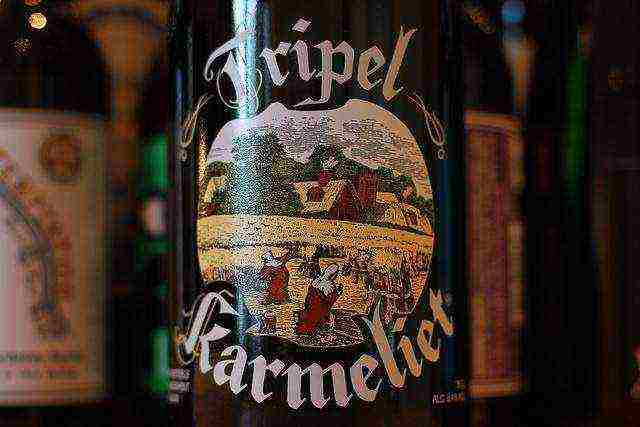
Belgian triple beer - Tripel Karmeliet. Photo:
Both Trappist and Abbey beers usually include several types of beer drinks differing in strength and composition, for example, the traditional types Dubbel (double beer) and Tripel (triple beer), which together with Enkels (single beer, now time is no longer brewed) reflected the Holy Trinity and the real strength of beer. Some brewers are now producing a particularly strong beer, the Quadrupel.
Lambic
Lambic is a traditional beer from Pajottenland, near Brussels. The drink is produced by natural fermentation using wild yeast, which makes it dry, almost like wine or cider, with a sour and slightly bitter aftertaste. The drink is kept for 3 years in old port or sherry barrels. Lambics are often blended or sweetened. They are released in different styles, many of which have just reached an international audience.

Belgian beer Lambic - Creek (Kriek). Photo:
Gueuze is a bottled fermented lambic that has been aged and refined for 20 years. Faro is a less fortified version with added sugar. Sour cherries are added to Kriek beer for a dry, sour taste. Fruit lambics have become quite popular around the world, although not all of them are genuine lambics.
Belgian white beer (wheat)
White wheat beer (French blanche) nearly disappeared in the 1970s when an adventurous young farmer, in his village called Hoegaarden, tried to revive the local brewing tradition.
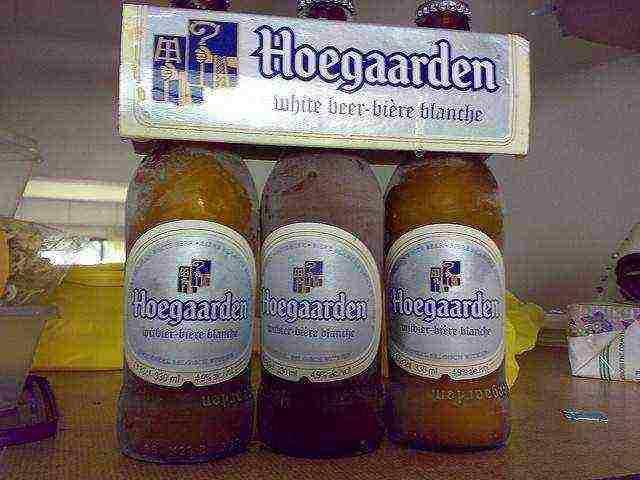
Belgian white beer - Hoegaarden. Photo:
Belgian brewers often add spices to their beers, the most popular of which is coriander.A kind of reminder of the time when the drink was brewed completely without hops and seasoned with a mixture of various herbs and spices.
The weak "white" beer is good for refreshing, especially in the summer. It is brewed all over the country using spices to add various aromas to this noble drink.
Golden Ale
It can be strong and rich with a beautiful golden hue or lighter in shade and strength. Belgian golden ales are not overly hoppy or flavored with spices. Pilsner malt is often used in its preparation.
Belgian Ale - Duvel. Photo:
Duvel, which means devil in Flemish, is an international example of Belgian golden ale. By the way, devilish imagery can be seen in all varieties of golden ales. The Belgians adore them, especially in Wallonia you will find them all over the place.
Red Ale
Red ales are the pride of West Flanders. When making them, special dark malt is used, which gives them a red color and to improve the quality of the drink, young beer is blended with aged.
Belgian red ale. Photo:
Red ale has a mildly sour taste. It is prepared by natural fermentation and aged in oak barrels for up to 2 years. Tasters usually identify rich and slightly bitter fruity notes in it. Among all beers, red ale tastes more like wine than beer.
Seasonal beer (Saison)

Belgian seasonal beer - Saison. Photo:
During the dark, cold, wet winter months, Wallonia farmers tune their cauldrons to brew a refreshing and not too strong ale. It is sometimes cooked with spices or using wheat. The strength of the drink can be 5% or more.
Brown Ale
Belgian brown ale. Photo:
While West Flanders is famous for its red ale, its eastern neighbor is known for brown. Oud Bruin is a blend of young and matured beer, similar in taste to lambic. As with lambics, the addition of fruity flavors brightens and softens many Oud Bruin strains.
Belgian stout (Stout)
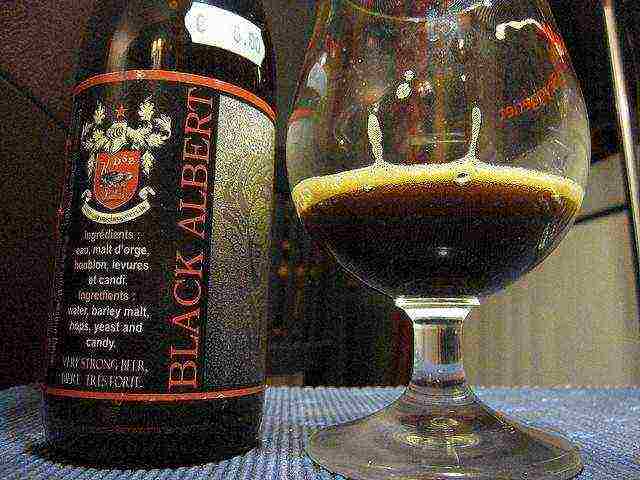
Belgian beer - Stout. Photo:
Forget your usual Guinness! Belgian stouts are stronger, less sweet, and more complex. Guinness, the international beverage giant, has even released a special version of their flagship Stout to sell to the discerning Belgian beer lover.
And this is just the beginning, just a short introduction to the varieties of Belgian beer. In fact, there are many more amazing features that will be interesting to know about.
For example, each brewer has special glasses made specifically for their specific beer brand, as well as a cafe with hundreds of bottles of beer on the menu. No less interesting is the art and science of serving beer to Belgian national dishes.
All that remains is to go to this small, amazing country and arrange a gastronomic tour with a tasting of the entire variety of local beer! You are ready?
(via)
The first beer in Belgium appeared in the 12th century during the Crusades. Like most European alcohol, they began to brew it in monasteries and use it there, and it was only after 1861 that the foamy drink began to be exported to the laity (this date was even recorded in the annals). In the 18th century, Trappist monasteries emerged, famous for the art of brewing and giving the name to a particular type of beer.
How many beers are there in Belgium
The answer is a lot! There are 180 breweries in the country that produce about 900 varieties of the foamy drink. But only 300 of them are bottled, the rest is sold only on tap in bars. It makes no sense to describe all the varieties, but we will try to answer the question of what beer to try in Belgium and tell you about the most popular ones.
Trappist ale
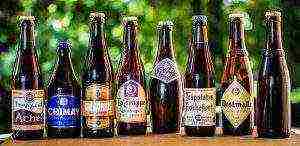 Beer from the very Trappist monks who took the art of brewing to a whole new level.There are now six Trappist Catholic orders in the world (one in the Netherlands, the rest in Belgium). The main feature of Trappist ale is that monks must take part in its preparation, and not only lay people. There are six such industries in the country:
Beer from the very Trappist monks who took the art of brewing to a whole new level.There are now six Trappist Catholic orders in the world (one in the Netherlands, the rest in Belgium). The main feature of Trappist ale is that monks must take part in its preparation, and not only lay people. There are six such industries in the country:
• Orval;
• Chimay;
• Ache;
• Rochefort;
• Westvleteren;
• Westmalle.
They mainly specialize in strong varieties with an alcohol content of 7-9%.
Abbaye ale
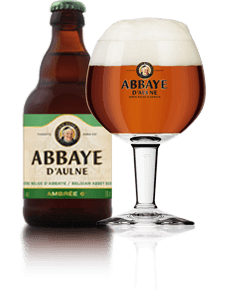 Abbey ales are strongly tied to the Catholic Church. A true, licensed product must meet one of two requirements:
Abbey ales are strongly tied to the Catholic Church. A true, licensed product must meet one of two requirements:
• Beer is brewed in a Catholic monastery by monks (but not Trappists) such as Benedictines.
• The beer is brewed in a secular brewery that has a license from an operating monastery.
Now about 20 sorts of Belgian beer have been certified, which have the honor to be called “abbey”. This is if you do not take into account the commercial brands that insolently and without a license use the Abbaye Ale trademark.
Lambic
 The production technology of the Lambic variety has not changed for 400 years, it does not involve the use of brewer's yeast (which accelerates the fermentation process), and therefore is not used anywhere except in Belgium. The peculiarity of the drink is that it is made by natural fermentation - the beer “matures” in wooden barrels for about three years.
The production technology of the Lambic variety has not changed for 400 years, it does not involve the use of brewer's yeast (which accelerates the fermentation process), and therefore is not used anywhere except in Belgium. The peculiarity of the drink is that it is made by natural fermentation - the beer “matures” in wooden barrels for about three years.
Kriek
 Creek is the name of a cherry beer in Belgium, which gets its name from a variety of dark red cherries. Some connoisseurs consider the Creek one of the varieties of Lambic, others recognize it as a standalone product. It doesn't really matter - cherry beer has gained popularity all over the world, and therefore deserves to be called one of the best products of the Belgian art of brewing. It is prepared from overripe cherries, double fermented and matured in oak barrels. Sugar is never added to it, which is abundant in berry juice.
Creek is the name of a cherry beer in Belgium, which gets its name from a variety of dark red cherries. Some connoisseurs consider the Creek one of the varieties of Lambic, others recognize it as a standalone product. It doesn't really matter - cherry beer has gained popularity all over the world, and therefore deserves to be called one of the best products of the Belgian art of brewing. It is prepared from overripe cherries, double fermented and matured in oak barrels. Sugar is never added to it, which is abundant in berry juice.
Oud Briun
 Another name is Flanders red ale with a strength of 5.5-6.5%. The most popular brands are as follows:
Another name is Flanders red ale with a strength of 5.5-6.5%. The most popular brands are as follows:
• Liefmann's Goudenband;
• Itchegem's;
• Felix;
• Goudenband;
• Aging Oud Bruin.
Red ale has its own peculiarity - a characteristic acidity, which is set off by floral and fruity undertones. The beer is not for everybody, but for the sake of interest it is worth a try.
Brown ale
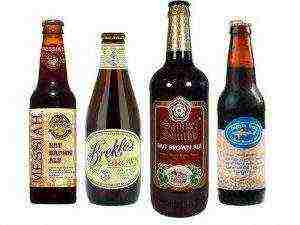 A variety of Belgian beer, which is represented by several brands that differ greatly in taste. The Gouden Carolus brand deserves a special mention. Its peculiarity is that the beer “ripens” after bottling, and therefore it is impossible to predict its taste in advance - it seems that the bottles are the same, and the labels, but always comes across a foamy drink that is unlike others. Other popular brown ales include:
A variety of Belgian beer, which is represented by several brands that differ greatly in taste. The Gouden Carolus brand deserves a special mention. Its peculiarity is that the beer “ripens” after bottling, and therefore it is impossible to predict its taste in advance - it seems that the bottles are the same, and the labels, but always comes across a foamy drink that is unlike others. Other popular brown ales include:
• Gildenbier (beer with a strength of 7% and a chocolate flavor);
• Kasteel Brown (10% strength and sweetish aftertaste);
• Leffe Brune (light and dark beer with a strength from 6.6% to 9%).
Amber ale
A rather atypical product for Belgium - a light, light, top-fermented beer of small strength. If you are in Antwerp - taste De Koninck, which is a prominent representative of Amber Ale. Why in Antwerp? Because during transportation this beer loses most of its flavor characteristics, and its "life time" is no more than a week.
Do you want to go to beer paradise? In this case, you need to go to Belgium! In this country, there is a real cult of this foamy drink. It is to the Belgians what wine is to the French. More than 600 types of beer in a variety of styles are produced here. Moreover, each Belgian beer, the varieties of which are described in this article, has a unique taste and is unique in its own way.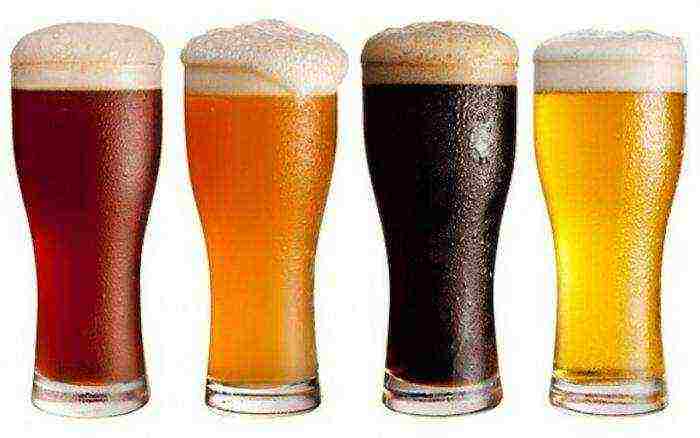
Germany, in comparison with Belgium, has a larger number of breweries, the same Czechs drink more liters per person annually, while the centuries-old love of the inhabitants of Belgium for the art of brewing is multifaceted and deep, like culture and national cuisine, entrenched customs, which for another person may seem surprising and strange.
It is difficult to explain why such a festive and diverse culture has developed here. Probably, the reason for this was the dirty water of the Middle Ages, instead of which they often drank this church-made drink.The abbeys helped spread the artisanal methods, purity and locality of the product, which have become fashionable concepts in the food world today.
Little Belgium is a country of regions, each of which prides itself on its own individuality. The special taste, style and recipes of Belgian beer are appreciated here. Thoroughly exploring all of its variety is a lifelong job, now we will look at the most popular varieties.
Floris Kriek (Belgian cherry beer)
Cherry exotic, refreshing, light top-fermented beer with the aroma of just picked cherries. It is moderately sweet, has a slight bitterness in the aftertaste. This Belgian cherry beer is made from water, hops, wheat and barley malt. Fresh cherry juice is added to the finished drink.
This beer contains 30% juice. It is consumed slightly chilled, like its fruit cousins Huyghe Belgian Floris, without the risk of intoxication due to its low alcohol level (3.6%). The danger lies in the excessive use of this amazing drink, since its taste is actually indescribable and requires frequent repetition. The cost of a glass of drink is about 180 rubles.
Trappiste (Trappist beer)
6 of the 8 Trappist breweries are located in Belgium. Westmalle - Trappist Brewery - launched its first drink in 1836. Trappiste is a constant pursuit of purity, tradition and quality. This Belgian beer is produced in small quantities in monasteries, which gives it an exclusivity.
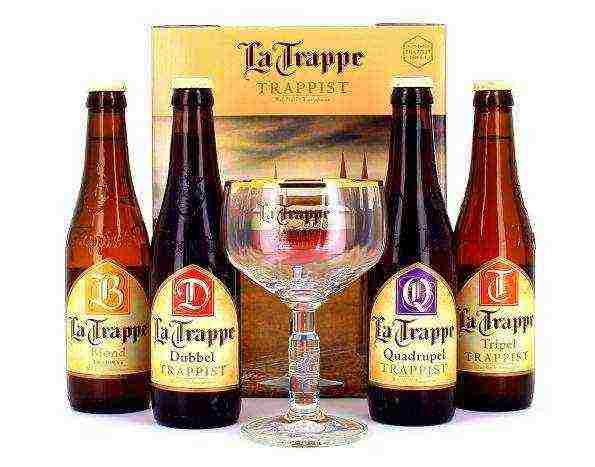
Interestingly, the six existing brewing abbeys are located throughout the country, each representing a different locality. Thus, Ahel is located on a green, flat area near the border with Holland. Chime is located near the French border among the forests; Orval - far to the south; Rochefort - near the hills and forests of the Ardennes; Westmalle - in the east, near the once mighty state of Antwerp; Westvleteren is located near the North Sea.
The cost of a glass of this beer is around 250 rubles.
Lambic
Lambic is a traditional beer produced in Payottenland, near Brussels. This Belgian beer is naturally fermented using wild yeast. This makes it dry, like cider or wine, with a slightly bitter and sour taste. The drink is aged for three years in sherry or port barrels.
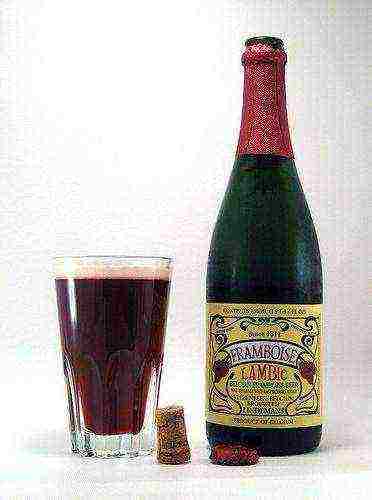 Lambics are very often sweetened or blended. They are released in various styles, some of which have only recently been recognized by an international audience. The cost of a 0.5 liter bottle is 180 rubles.
Lambics are very often sweetened or blended. They are released in various styles, some of which have only recently been recognized by an international audience. The cost of a 0.5 liter bottle is 180 rubles.
Abbey (abbey beer)
Belgium owes the education of the culture of brewing to the monks, most of whom arrived in the country as refugees during the French Revolution - at that time violent anti-church uprisings broke out. Belgian beer Abbey can be used as a brand, as well as as a link to this historical event, while the production of a certified drink is associated specifically with the monasteries. Some of its varieties still bear the names of famous abbeys.
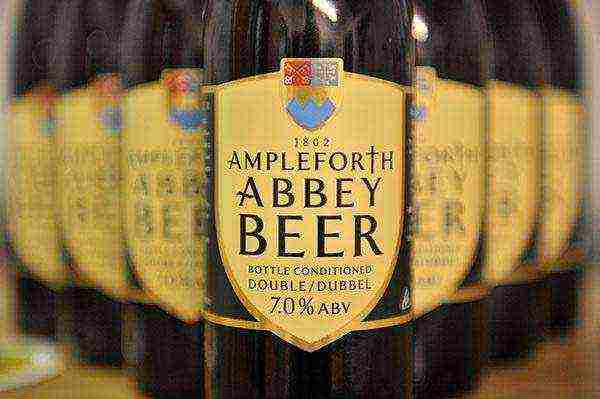 Both Abbey and Trappist beer brands include several types of drinks at once, which differ in composition and strength, for example, the classic types Dubbel, Tripel and Enkels, which reflected the Holy Trinity, and also presented the real strength of the drink. Some brewers today make Quadrupel, a particularly strong beer. A glass costs about 100 rubles.
Both Abbey and Trappist beer brands include several types of drinks at once, which differ in composition and strength, for example, the classic types Dubbel, Tripel and Enkels, which reflected the Holy Trinity, and also presented the real strength of the drink. Some brewers today make Quadrupel, a particularly strong beer. A glass costs about 100 rubles.
Golden Ale (golden or pale ale)
This Belgian beer can be rich and strong, with a golden hue, as well as lighter in strength and hue. Golden ales are not very hoppy, nor are they spiced. Pilsner malt is very often used in their preparation.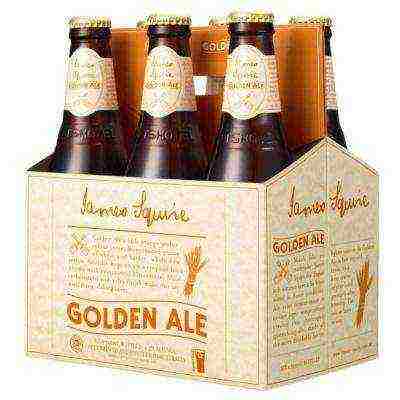
It should be noted that Duvel beer is an example of Belgian golden ale. By the way, devilish imagery can be seen in all types of golden ales.They are adored by the Belgians themselves, in Wallonia you will find them everywhere. The cost of a glass is about 300 rubles.
Belgian white beer
This beer almost disappeared in the 1970s, when a young entrepreneurial farmer began to revive local traditions.
Belgian brewers often add spices to their beer, coriander being the most popular of them. This is a reminder of the time when the drink was brewed without hops at all, seasoning it with a mixture of different spices and herbs. White, weak beer perfectly refreshes, especially in summer. The average price of a glass of such a drink is 130 rubles.
Red Ale
This is the real pride of West Flanders. When making it, use a special dark malt, which gives a red hue. At the same time, to improve its quality, young beer is mixed with already matured one.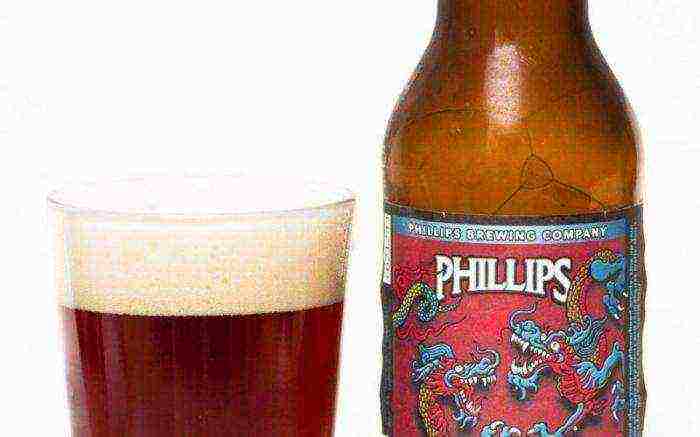
This ale has a slightly sour taste. It is prepared by natural fermentation and is aged in oak barrels for up to 2 years. Tasters usually find slightly bitter and rich fruity notes in it. Interestingly, red ale tastes more like wine. A bottle of this ale will cost you 150 rubles.
Brown Ale
West Flanders, as we have already learned, is famous for its red ale. But her neighbor to the east is brown. 
Oud Bruin is a blend of aged and young beers. It tastes like lambic. Many varieties of this drink are softened and brightened by the addition of fruity flavors. A bottle of this beer will cost you 280 rubles on average.
Saison (seasonal beer)
During the wet, cold winter months, farmers in faraway Wallonia set up brewing kettles for a less-strong and refreshing ale. 
It is sometimes brewed with spices and wheat. The strength of such a drink is at least 5%. Seasonal beer costs 190 rubles on average.
Stout
Forget the simple Guinness! Belgian beer Stout is stronger, more complex and less sweet. Guinness, the beverage giant, has even released a version of its Stout to sell to a Belgian beer connoisseur.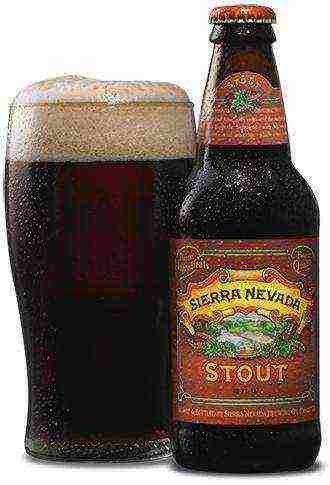
Gueuze is a fermented bottle lambic that has been improved and aged for twenty years. Faro ("Faro") - a less strong version with sugar. Belgian beer Kriek ("Creek") contains sour cherries, which give the drink a sour, dry taste. Fruit lambics are very popular in many countries today, although many of them are not genuine lambics.
The price of a glass of this beer is 300 rubles.
And this is just the beginning, just a brief introduction to the most popular varieties of local beer. There are many more amazing features though. For example, each brewer has special glasses made for their own beer brand. The science and art of serving beer to various national dishes are also interesting.
All that remains is to go to this amazing little country and arrange a real gastronomic tour, while tasting all kinds of Belgian beer!


